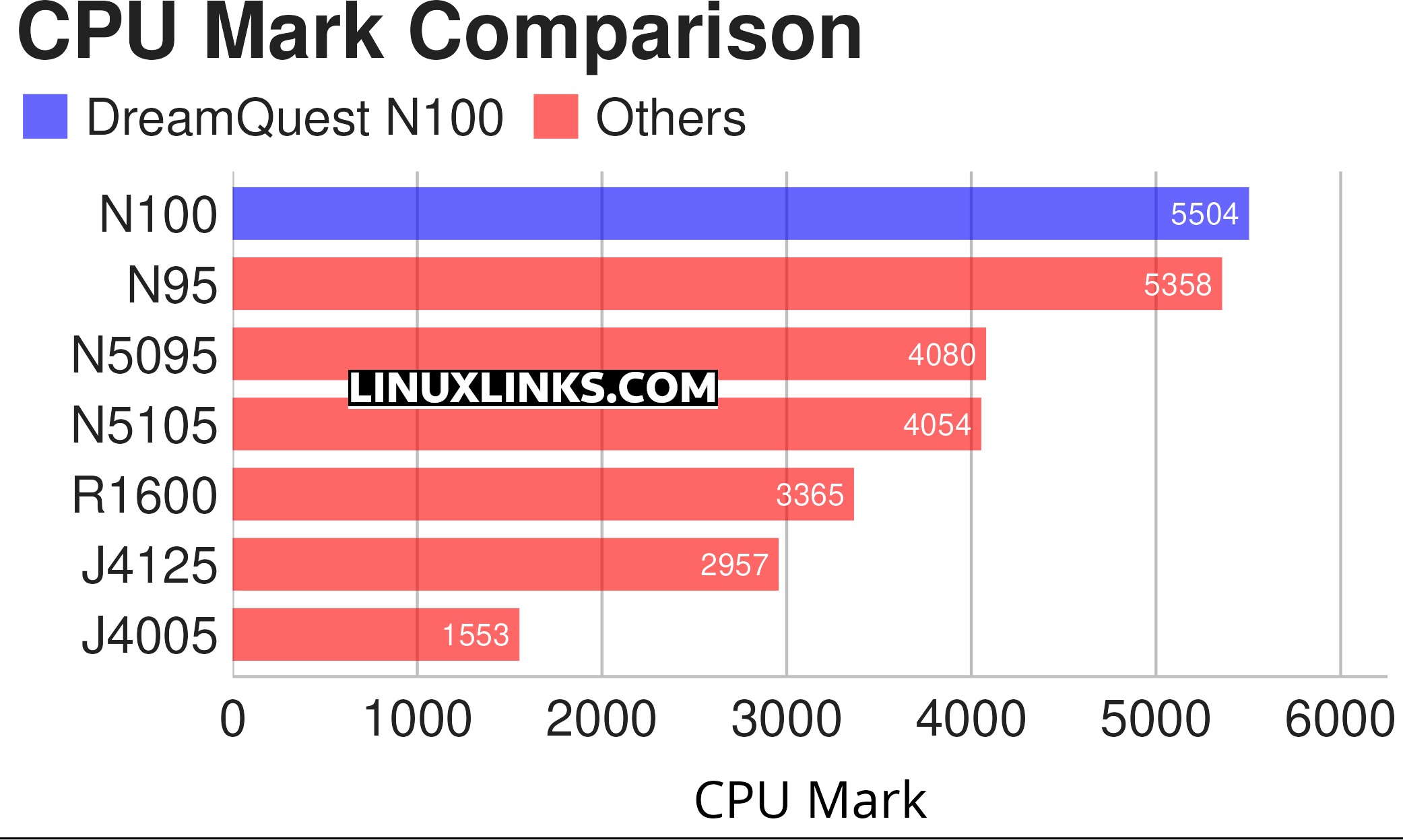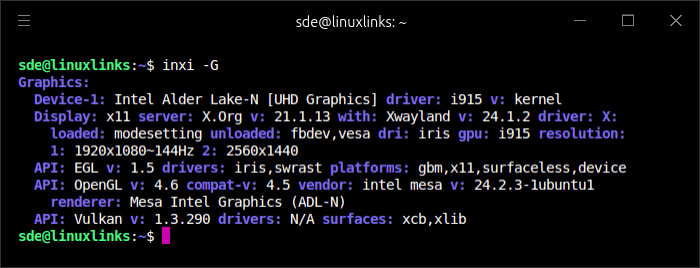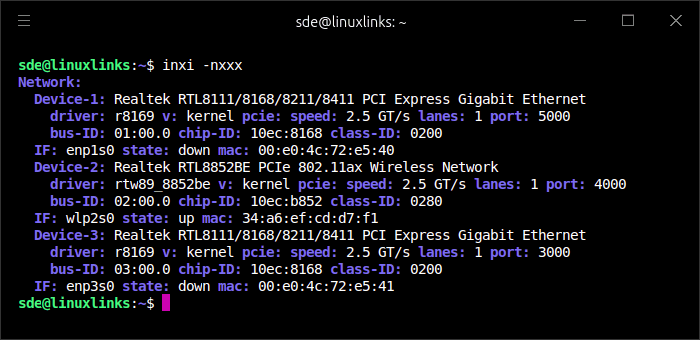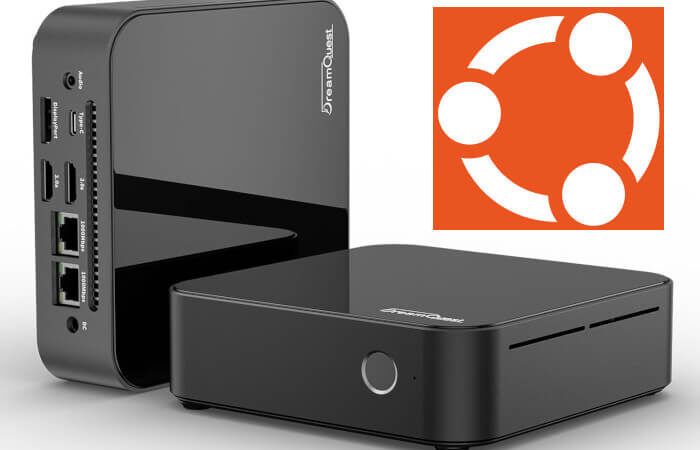Specifications
We interrogated the system running Ubuntu 24.10, the latest version of this very popular Linux distribution.
The DreamQuest N95 Mini PC hosts an Intel N100, a processor that falls in the mobile segment. Launched in the first quarter of 2023, it has 4 efficient cores (without hyperthreading). For its class, it’s a popular processor that’s found in many low cost mini PCs.
The DreamQuest PC was running under very light load when the image below was taken. As you can see, all of the cores are running at 700MHz, the lowest frequency. for this chip.

With the machine under stress, the four cores run at a maximum 2900MHz.
The Intel N100 has a CPU Mark score of 5,504. For reference, that’s a score very slightly lower than an Intel i5-6500 desktop processor. But bear in mind the N100 has a TDP of a mere 6W, whereas the i5-6500 is a hefty 65W. In other words, the performance feel of the N100 will be very similar to the i5-6500 desktop processor, yet use significantly less electricity. Remember the TDP of a processor is not a definitive guide to power consumption, so we’ll test this with a power meter in a later article in this series.
We’ll be benchmarking the N100 against other processors in the next article in this series. For now, here’s a chart comparing the N100 with some other very low power processors using the CPU Mark benchmark. The processors below are often found in Mini PCs and NAS devices. The N100 beats the others, marginally compared to the N95, and significantly with all the others.

Hardware virtualization is available on the N100, which greatly improves virtual machine performance.
Graphics
The N100 provides onboard Intel UHD Graphics. The DreamQuest machine can run 3 4K monitors at 60Hz via its HDMI, Type-C and DisplayPort ports.
The image below shows we’ve connected two monitors to the machine.

Due to the low clock speeds, and low shader count, the gaming performance of the iGPU is extremely limited. Alder Lake-N was never designed as a gaming platform though, instead targeting lower-level tasks like web browsing, video playback, and basic office work.
Disk
For storage, the machine hosts a CF400 M.2 2280 SATA 512GB SSD.

We originally installed Ubuntu 24.04 LTS and subsequently upgraded the distro to Ubuntu 24.10. After installing a variety of software, only 26GB of disk space is used.
512GB of storage should be sufficient for most use cases. If not, the machine has lots of expansion options. First, it has two M.2 2280 slots, each of which can take up to a 2TB M.2 2280, making a maximum internal storage capacity of 4TB. There’s also a Type-C port and USB 3.2 ports so storage can be expanded externally as well. Besides the Type-C port outputting video and audio, and connect to a display, it also supports high speed charging.
Memory
inxi reports that the machine has two memory slots, one of which is populated with a 16GB DDR4 module. The RAM can be expanded up to 32GB, but for most use cases, the 16GB should be sufficient.

Audio

Bluetooth
There’s support for Bluetooth 5.2 which works out of the box in Ubuntu (we tested both Ubuntu 24.04 LTS and Ubuntu 24.10).

Network
Unlike many mini PCs with an N100 processor, the DreamQuest mini PC offers 802.11ax technology. That’s Wi-Fi 6, not Wi-Fi 5. Wi-Fi 6 offers vastly superior transfer speeds compared to Wi-Fi 5.
The machine also offers 2 RJ45 ethernet ports. Both wired and wireless work out of the box in Ubuntu 24.04 LTS and Ubuntu 24.10.

Temperature
The temperature reading was taken with the machine under light load. As you can see, the machine runs very cool.

If we stress all 4 cores, the processor’s temperature only increases to 55C. That’s testament to the design of the machine. It has a built-in air duct cover which dissipates the heat very effectively.
Given that the machine runs so cool even when stressed, we hoped there would be the ability to change the fan profile. The machine does run very quietly, but the fan is always running and is audible from 1m in a very quiet environment.
While the BIOS has options to change the fan speed at different temperatures, they have no effect whatsoever. So if you’re looking to make the machine run silently, that’s not possible.
Summary
Besides the two latest versions of Ubuntu, we also tested other popular distros on the machine including Arch, Devuan, Fedora, openSUSE, and Debian. All of the DreamQuest’s hardware runs flawlessly under these Linux distros without any additional drivers needed.
In the next article in this series, we’ll benchmark the system.
Pages in this article:
Page 1 – Introduction
Page 2 – Specifications
Complete list of articles in this series:
| DreamQuest N100 Mini PC | |
|---|---|
| Part 1 | Introduction to the series with an interrogation of the system |
| Part 2 | Benchmarking the DreamQuest N100 Mini PC |
| Part 3 | Power Consumption and Running Costs |
